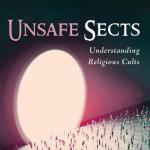
Communion, pt. 9 | Sarapion, St. James, and Cyril
For more on Communion in the Early Church from the Archives CLICK
Sarapion, Prayer of Oblation of Bishop Sarapion
Sarapion writes before 350 A.D. a piece called the Prayer of Oblation of Bishop Sarapion. What follows is Sarapion’s epiklesis:
“O God of truth, let Thy holy Word come upon (epidemesato) this bread that the bread may become Body of the Word, and upon this cup that the cup may become Blood of Truth.”[1]
Dom Gregory Dix explains Sarapion’s communion prayer.
“In contrast with Hippolytus, where the institution narrative is taken as implicitly identifying the bread and wine with the Body and Blood of Christ by virtue of His own promise, Sarapion’s prayer shews a new desire for an explicit identification. This desire is found in other fourth century writers also, but hardly before that time.”[2]
Earlier authors may or may not imply the identification of Christ, but Sarapion takes strides to develop the doctrine. Because of his influential epiklesis the East eventually prays in the fourth and fifth centuries that, “the Holy Ghost, the Third Person of the Holy Trinity, would (in some sense) ‘make’ the elements into the Body and Blood of Christ. This became for them the ‘moment of consecration.’”[3]
The Liturgy of St. James
The moment of consecration is reflected in The Liturgy of St. James, which gains widespread acceptance in the East during the fifth century. There are a two invocations which call on the Holy Spirit.
The first is, “send forth upon us and upon these gifts that lie before Thee Thine all-holy Spirit, the Lord and life-giver; that shareth Thy throne with Thee.”[4]
The second invocation is the epiklesis:
“Send down, O Lord, upon us and upon these gifts that lie before Thee Thy self-same Spirit the all-holy that hovering with His holy and good and glorious coming He may hallow and make this bread the holy Body of Christ [The people: Amen] and this cup the precious Blood of Christ [The people: Amen.]”[5]
Cyril of Jerusalem, The Rite of Jerusalem
Cyril becomes the Ordained Bishop of Jerusalem in 348. In the Eucharistic rite of Cyril:
“There is no room here for the old Syrian equivalence of ‘spirit’ with ‘presence’. What is intended is unmistakably a prayer for the descent of the Holy Ghost, the Third Person of the Holy Trinity, as at Pentecost.”[6]
Cyril, “held the doctrine of the full Personality and Godhead of the Holy Ghost with a precision and clarity not very common among his contemporaries.”[7] This includes Cyril’s contemporaries in the West.
Cyril’s epiklesis reads:
“we call upon the merciful God to send forth his Holy Spirit upon the gifts lying before him: that he may make the bread the Body of Christ, and the wine the Blood of Christ, for whatever the Holy Spirit has touched is sanctified and changed.”[8]
Cyril’s rite offers a thanksgiving for creation, an epiklesis, and a long intercession.
Cyril is good to focus on as this project draws to a close. Cyril carries us into the Post-Nicene era. The idea of the epiklesis is not well formed in the Ante-Nicene era. Yet Cyril sets the stage for the East with his development of the rite.
“He was certainly the great propagator, if not the originator, of the later theory of eucharistic consecration by the invocation of the Holy Ghost, with its important effects in the subsequent liturgical divergence of East and West.”[9]
For more on Communion in the Early Church from the Archives CLICK
pic credit: Priscilla Du Preez | A person takes communion at a Christian church service | 11.15.18 | unsplash
notes:
[1-7] Dom Gregory Dix, The Shape of the Liturgy, 3rd ed. (London: Bloomsbury T&T Clark, 2015), 164; 167-168; 168; 191; 191-192; 198; 198.
[8] Hugh Wybrew, The Orthodox Liturgy: The Development of the Eucharistic Liturgy in the Byzantine Rite (1989; repr. London: Society for Promoting Christian Knowledge, 2013), 34.
[9] Dix, 350.














